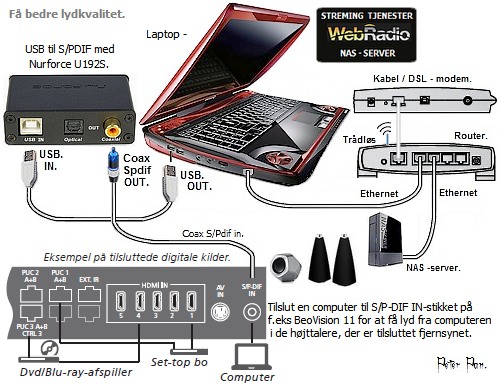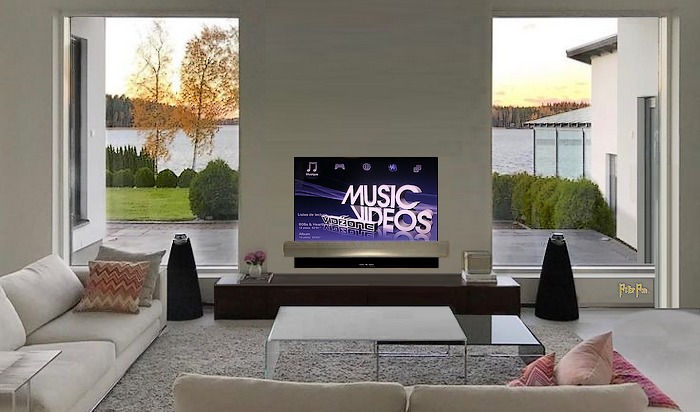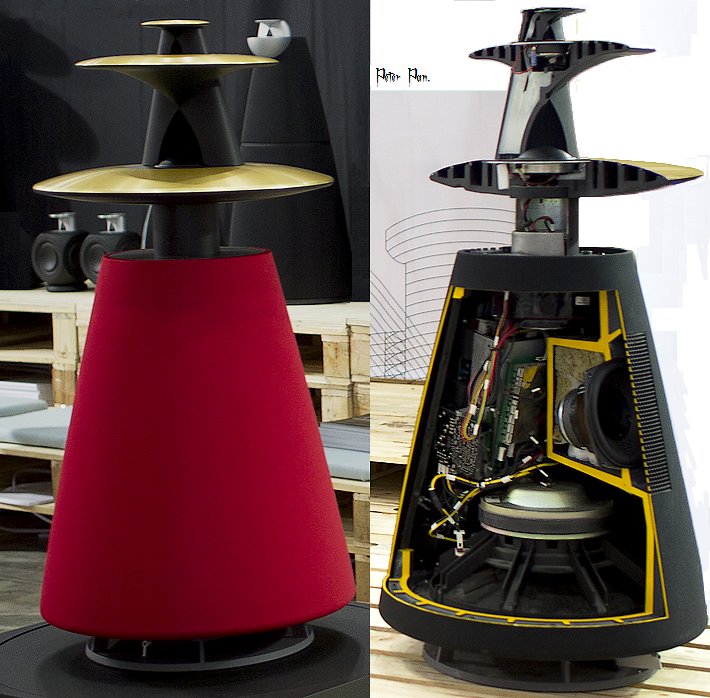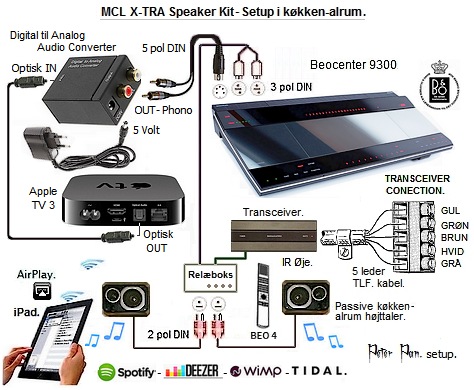Tiden går fort. Ti år tilbake intervjuet jeg David Moulton, som har patent på akustiske linser, om tankene bak hans arbeid:
Music is strong medicine for the soul - David Moulton
David Moulton’s Golden Retriever ”Teddy” likes to sing along when David mixes music in his studio. The dog will come into the room, sit down, raise its head and sing, modulating its howl to fit the melody.
"Our hearing is one of the oldest senses," Moulton says, "predating humans and common to all mammals. I can't prove it, but my speculation is that it developed underwater. I also suspect that many of our associations from music come from that time, and that they are in our genes. The crash of waves, turbulent water, the sound of a storm - or the gentle tinkling and clicks of a coral reef, to the beat of gentle waves, pure tranquility. These are deep soundscapes that are still capable of triggering emotions, filling us with joy or worry."
Moulton has spent a major portion of his life examining and thinking about how humans hear - and why. Over twenty years ago, he set out to create a new loudspeaker. He had noticed that when he performed his music live, through loudspeakers, their quality significantly affected the quality of his playing. Other musicians confirmed they shared the same experience.
“Clearly, some speakers engaged me in a truer sense, one that informed my playing and made it better. I began investigating why.” The path of inquiry took him through many different designs, before he and his former student and collaborator, Manny LaCarrubba, came up with the Acoustic Lens Technology that’s now found in speakers from Bang & Olufsen.
“I am convinced that music involves us in ways that do not result from just a single sound source. We want to feel the performance space, just as we feel sound with our bodies, when submerged in the sea. Musical instruments disperse sound in different ways. A piano radiates in a distinct manner. Woodwinds have great variations among them. String instruments are different in their particular ways. Voices are yet another matter, entirely. Getting technology, a speaker, to recreate those differences from the left and right speaker positions only, that should actually be impossible.”
Moulton claims that we are willing to suspend disbelief when we listen. We think we are hearing the real thing. He’s amazed at how willingly we accept the illusion.
"I used to joke around with my students. I’d tell them, an electric guitar is not that thing with a wire coming off it that guitarists hold and play. It's the black box, the Fender amp sitting next to them, that's making the sound. The amplified speaker, that's the actual instrument, the electric guitar. The thing the guy is playing is really just an electric guitar controller. Today, for almost all music, the speaker is the instrument."
In 1996, Moulton and LaCarrubba got an opportunity to demonstrate a prototype speaker to Acoustic Technology and Innovation Manager Poul Præstgaard of Bang & Olufsen. Præstgaard immediately understood that LaCarruba and Moulton had arrived at a breakthrough insight and that their design would complement work Bang & Olufsen had been conducting, with the same aim of improving sound dispersion. A collaboration began that would take six years from concept to finished product, and which resulted in the BeoLab 5 speakers. The team launched themselves at the task with the dedication of master instrument makers.
"Physically, that's exactly what speakers are -- instruments which make music. In 1900, essentially no music was played on loudspeakers. Performances were live. One hundred years later, at least 99 percent of all music is played on them. But when we listen to loudspeakers, we don't hear them; we have a deaf spot. We say, that's a violin, that's a piano, that’s Leontyne Price. But we're actually listening to a loudspeaker, not a piano or a person. Professional musicians don’t very much like listening to recordings, because they know that a lot has been lost. And those of us who are content to just listen, seem willing to accept more or less crass imitations of the original performances.”
The acoustic lens doesn’t shoot sound at you in a beam, as regular speakers do. Instead, the speakers that produce the mid- and high-tones aim upwards in their cabinet. The sound waves enter a specially shaped dispersion chamber, which redirects the sound towards the listeners. The horizontal “platters” then prevent the soundwaves from striking the floor or ceiling, before they reach your ear.
“The Hartt School of Music invited me to come and demonstrate the speakers. They have a highly advanced musical performance and audio production curriculum. A roomful of students and professors, willing to be as critical as anyone, were struck by the sheer reality of what they heard. Recordings came alive for them. It’s not all due to the lens, of course. They claimed they had never heard a bottom octave that was as solid as what the BeoLab 5s could do, outside live performances.”
Bang & Olufsen added Adaptive Bass Control to the speakers. Whenever they are set up in a room, or moved, a quick room analysis can be initiated, ensuring that the weight of the bass is proportional to the room characteristics and position. Coupled with the acoustic lenses, and the in-built amplifiers that deliver a stunning 2500w per speaker, the BeoLab 5s are truly one-of-a-kind.
“And that’s also a challenge to the audiophile community, of course. Speakers that “shape” themselves to the room they are in, and recreate the original performance with stunning fidelity, while requiring no tinkering at all, take some of the fun out of being an audiophile. Some claim the lenses are too bright, sounding abnormally clear and light. That may be because they don’t spend enough time listening to actual live performances. Professional musicians and people who go to a lot of concerts are in little doubt, these speakers involve them more, convey more of the soundstage as it actually was, at the moment of creation.”
When one professional test listener listened blindfolded to a BeoLab 5 setup, she refused to believe she wasn’t listening to live music. That moment was vindication for the team behind the new technology, which can now be found in several of Bang & Olufsen’s speakers.
Moulton liberally spends of his time demonstrating the speakers. His zeal is fired by the fact that most people today listen to compressed music through inferior speakers. An mp3 file compressed at a regular bitrate contains only nine percent of the material stored on a stereo CD. Compression easily ruins acoustical performances, such as jazz or classical music.
"To me, it sounds like ‘music lite.’ In general, there’s hardly any awareness of the serious loss in quality that occurs from fast downloads or making multiple mp3 copies," Moulton says. "People have almost no idea of what they are missing as far as details, depth, dynamics and expressivity."
He collaborates with the Indian Hill Music Center, where he gives clinics on sound for high schoolers. Listening through BeoLab 5s to Rage Against the Machine's "Killing in the Name", he says, changes their perspectives and raises their sound-quality bar.
"Once they hear the difference, they go, `Oh, I really didn't understand.’”










